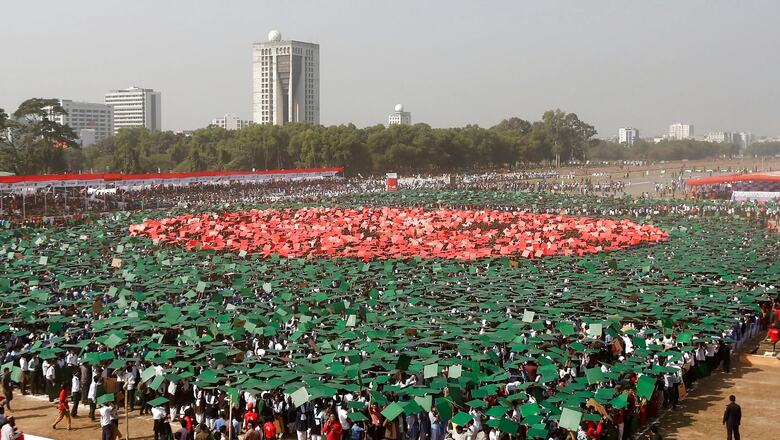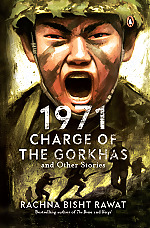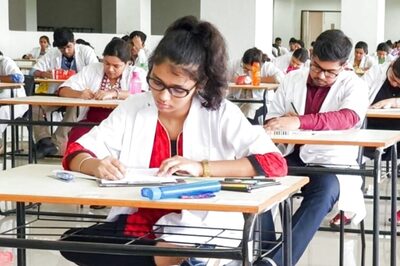
views
5 December 1971
Amritsar airport
Around 1230 hours
Flight Lieutenant Vijay Vasant Tambay is walking purposefully down the tarmac in his blue overalls. For a moment, his mind goes back to Ambala, where he has left Damayanti, his wife of eighteen months. He knows she hates being alone and would be ticking days off the calendar till he returns. Her response to his ‘Aaj tumne ghar mein kya kiya?’ has always been ‘Intezaar!’ Tambay smiles to himself.
It is a clear day and the winter sun is nearly blinding. Helmet clasped in the crook of his arm, he squints to look at his faithful Su-7, tail number B-839, that waits for him, fully armed and ready for action. A bright-eyed airman in a crew cut, not older than twenty, is standing near the stepladder. He steps forward to take Tambay’s helmet that has his nickname, ‘Uncle’, painted on it. Taking a cursory walk around the aircraft to check if everything is in order, Tambay climbs into the open cockpit and, strapping himself into the narrow seat, puts on his headset and helmet. He pushes the lever that slides the glass canopy cover of the cockpit into place and, after asking Air Traffic Control for permission to fly, signals a thumbs up to the airman.
Snapping to attention, the airman salutes Tambay as per the mandatory procedure followed across the world every time a combat aircraft lifts off. That launch salute is not just a sign of respect but also a traditional final goodbye in case the pilot never returns. Tambay salutes back. It is destined to be his last flight.
Adjusting the mission route map on the instrument panel coaming, Tambay pushes the throttle forward. The jet engine revs up, and the mighty Su-7 starts to taxi out to the runway. The white taxi line is zipping past as the aircraft starts to move, and he can hear his own breath on the headset. He sees his mission leader, Squadron Leader (later Air Marshal) V.K. Bhatia, call sign Eagle 1, entering the runway. Bhatia opens full power and moves forward. Tambay follows just 100 m behind. The two Su-7s roll down the runway faster and faster. Tambay watches Bhatia lift off smoothly and follows him up in the air. The two planes turn and, with a frightening roar, cross the international border at a speed of 900 km per hour, taking barely two minutes to travel the 22 km distance. Flying at a height of about 100 m, they have to pull up to avoid the high-tension pylons as they cross the border south of Lahore. They are heading towards Shorkot Road. Their mission is to strike the enemy airfield and the planes parked there.
The two Su-7s hit Shorkot Road around 1345 hours. Lunchtime has deliberately been chosen for the mission since enemy aircraft defences are expected to be down. However, the pilots soon realize that this is a mistaken belief. The airfield is dotted with more than a hundred lethal anti-aircraft ack-ack guns waiting for the Indian fighters, who had already caused much damage the day before. The two Su-7s lose no time in making an attack. They engage the target successfully and then reverse and come back for a second strike. As Tambay pulls up and dives down to strafe the airfield, his plane comes under heavy fire. He hears the rattling sound of shells meeting fuselage and feels a sudden jerk.
Looking in the rearview mirror, he notices a spiraling plume of smoke curling out of his aircraft and realizes he has been hit. The Su-7 immediately starts losing height. Much as he tries, Tambay cannot pull the aircraft up. He is fiddling desperately with the controls but his efforts are futile. The grey smoke cloud is getting denser. He can now see fumes outside his window too. His worried eyes move to the controls. Altitude has started to drop. On his radio telephony (RT) set he can hear his leader saying, ‘Tambay, eject.’ And then again, much louder, his voice raised in concern and urgency, ‘Tambay! Eject!’ The call is repeated multiple times. Tambay does not answer. His aircraft has gone into a steep dive.
Blinded by tears of rage and sorrow, a shattered Bhatia dives down and unleashes his rockets at the target. He then turns around and flies back to Amritsar alone. Tambay’s plane crashes on the runway, engulfing the area in a huge ball of fire. The time is 1350 hours.
ALSO READ | How Mukti Bahini, Partly Inspired by Che Guevera, Turned into a Battle-ready Force in 1971
**
August 2021
Munirka Vihar
Delhi
‘Paal le ik rog nadan zindagi ke vaaste
sirf sehat ke sahare umr to kat ti nahin.’
Frail, grey-haired and neatly dressed in a white salwar kameez and dupatta, seventy-two-year-old Damayanti
Vijay Tambay leans back in her easy chair and recites these lines to me. It has been fifty years since her fighter pilot husband left the house looking affectionately into her eyes with an ‘Aata hun’. She is still waiting.
Finding out what happened to him is the rog of her life, she says. ‘It is my fitoor, my obsession, it gives meaning to my life.’ I see no frustration or helplessness in her eyes. Just sadness and steely resolve. Her courage is no less than her husband’s, who went to fight for his country.
The day Flt Lt Vijay Tambay’s plane crashed, twenty two-year-old Damayanti was sitting alone at home. The previous night had been traumatic. She had spent most of it standing in the deep, moist, ant-infested trench that had been dug out in front of the house as a bomb shelter. In her pocket was a steel spoon and a thick roll of cotton. Tambay had told her that bomb attacks often jammed the jaws of victims, and keeping something between the teeth could prevent that. ‘Air-raid sirens pierced the silence of the night, ack-ack guns boomed, and I just stood there trembling with cold and fear,’ she remembers.
In the afternoon, some air force personnel rang the doorbell. Not mentioning the crash, they told her that it might be best if she went back home to stay with her parents. ‘I thought maybe Vijay wanted that, so I packed my suitcase, locked up the house and walked down to the railway station that was about 2 km from my house.’ Boarding the Kalka Mail, which made a two-minute stop at Ambala, Damayanti spent the night in the first-class corridor because no one wanted to open their coupe for her. When some passengers got down at Delhi the next morning, she got a place to sit and eventually reached Allahabad, where her parents lived.
On the night of 6 December, she was absent-mindedly fiddling with the radio when suddenly her blood froze. Radio Pakistan was announcing the names of Indian prisoners of war (POWs). Flt Lt Tambay was one of the names called out.
On 8 December, a telegram arrived, confirming the news that he was missing in action. It was from the Indian government. ‘Very selfishly, my first emotion was of relief. I thought he would not have to fight any more. And since his name had been publicly announced by Pakistan, I believed he would be repatriated. The thought that he might never come back just did not cross my mind,’ says Damayanti.
While both the Indian Air Force and the Pakistan Air Force appear to believe that Tambay did not survive the crash, Damayanti feels her husband bailed out of his burning aircraft and was taken prisoner.

This excerpt from 1971: Charge of the Gorkhas and Other Stories by Rachna Bisht Rawat has been published with the permission of Penguin Random House
Read all the Latest Opinions here



















Comments
0 comment